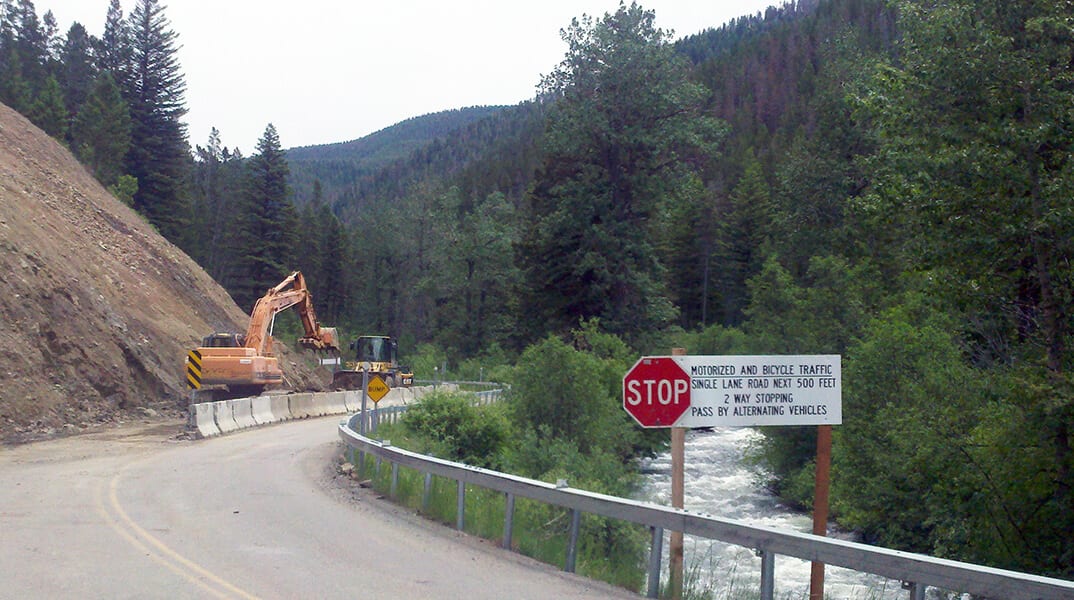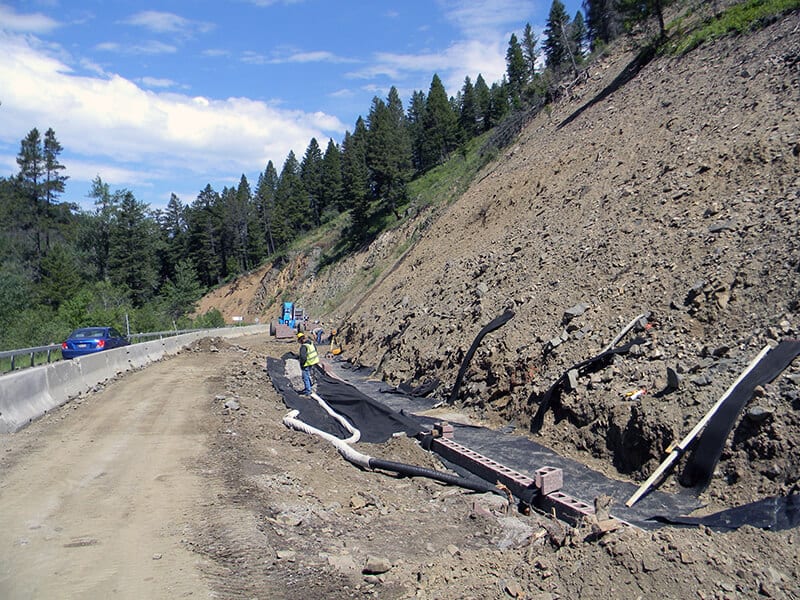





The United States Forest Service (USFS) is responsible for Hyalite Canyon Road near Bozeman, Montana. A continual failure near the base of a 300-foot, 1H:1V slope regularly deposited rockfall debris across the road. The USFS feared that a catastrophic failure of the upper mantle’s colluvium could conceivably deposit thousands of cubic yards of material into Hyalite Creek, which provides 40% of the drinking water for the city of Bozeman.
GeoStabilization International®, a mitigation company, collaborated with the Forest Service’s geotechnical engineers on a plan to stabilize the infinite slope. The resulting design was twofold; a soil nail wall buttress constructed at the top of the scarp to arrest further movement of the colluvium overburden and the use of Geosynthetically Confined Soil® (GCS®) technology, one of GeoStabilization’s soil stabilization innovations, as a rock catchment wall fabricated at the toe to collect loose debris.
Working on top of the scarp, the crew began drilling 303-each, 40-foot soil nails horizontally into the slope with limited-access drilling equipment to act as tiebacks and stabilize its front face. A steel-reinforcing element was then secured to the soil anchors before 3,000 ft2 of shotcrete was applied to the face for soil retention. Once complete, 75-each micropiles were installed vertically into the toe to provide a solid base for the retaining wall. Then, the crews built a 3,840 ft2 of GCS® retaining wall atop the micropiles to act as a rockfall barrier for material falling from the slope. All work completed during this challenging project was accomplished amid several inclement weather events typical for winter in Montana.
Mechanically Stabilized Earth (MSE) walls and GCS® walls share many of the same characteristics, including:
The MSE wall structure consists of layers of alternating compacted backfill and soil reinforcement fixed to the wall facing. The wall’s stability results from the tension between the backfill and soil nail reinforcements, which creates a flexible construct that withstands significantly heavy loads. MSE walls rely on the reinforcement mechanism, using grids that act as tiebacks.
In comparison, GCS® walls differ from MSE walls because their reinforcement materials confine the soil rather than interact with the facing and supporting elements. GCS® walls use closely spaced reinforcement material that provides uniform soil confinement throughout each layer. Adequate compaction is vital to prevent GCS® walls from failing.
Contact GeoStabilization at 855-579-0536 to learn how to utilize our rockfall and landslide remediation services for your geotechnical application. For over twenty years, our teams have been providing residential slope stabilization, slope monitoring, slope protection, and landslide prevention services.
If you are interested in a no-obligation site visit to determine if our services fit your geohazard mitigation needs, call us at 855-579-0536 or fill out our contact form.